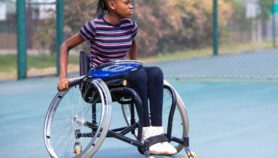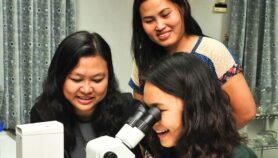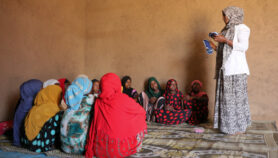Send to a friend
The details you provide on this page will not be used to send unsolicited email, and will not be sold to a 3rd party. See privacy policy.
More girls will study natural sciences if social norms are challenged — there are no innate barriers, argues Emily Ngubia Kuria.
Women have been under-represented in science for centuries, not least in Sub-Saharan Africa.
Participation rates do vary across the continent, with countries in southern Africa more progressive than elsewhere. But equality has not been reached, despite a concerted effort to increase girls’ access to education, as in Kenya where basic school education is compulsory.
There are several reasons put forward for this slow progress. But for me the key ones are persistent misconceptions about women’s abilities and disregard of where the gender gap in science arises — in secondary school education.
Where do girls drop out?
According to the Academy of Science for South Africa (ASSAf), the gap between men’s and women’s participation in science begins in primary school. I disagree — it happens later.
In many African education systems, mathematics is compulsory right up to A-levels, so how can we speak of a gap during primary school? The gap appears during secondary school and widens at higher levels of education.
Without question, the teaching style of science in primary school (memorising facts, for example) fails to sustain the curiosity of students and seems to affect girls more strongly.
But traditionally, the drop in girls’ participation in all education, not just science, begins in the 12–17 age group, when girls leave for early marriage or domestic duties, or because they can’t afford to pay the school fees.
Women’s perceived role in society has a bearing on the gender gap in other ways. Opinions about science subjects take shape during early adolescence when women (and men) begin to conform to social norms. A student’s interest in the sciences also hinges on whether or not they feel they can succeed in their chosen discipline.
My own experience bears this out. On learning that I intended to take a physics degree at the University of Nairobi, my female friends at the university cautioned that there was a higher probability of women failing undergraduate courses if they study science, technology, engineering or maths — the ‘STEM’ subjects.
And the professor who enrolled me on the course was quick to add that I would need to have a "certain kind of personality or mental acuity" to survive this "masculinised" discipline.
My decision to stay was based on my father’s confidence in my abilities. But what the experience shows is troubling: the presumption that boys have superior cognitive abilities exists even in higher learning institutions.
Not different by design
Researchers discussing the gender gap in science regularly support their argument by pointing to the mental rotation task, a test designed to identify factors that affect the speed of mental processes believed to show gender-based cognitive differences.
The test measures the time it takes to decide whether two images rotated on their axis in different angles are similar or not. It demands a mental transformation of these objects to bring them into a similar perspective for comparison before a judgement can be made.
Males make faster and more accurate decisions, a result used to support the idea that biological differences in intellect equip boys to do better in STEM subjects — for which spatial abilities are deemed necessary.
What has escaped the notice of these proponents is that gender differences in mental rotation skills are limited to particular designs of the experiment (the paper and pencil task version), and also only to specific stimuli (polygons, but not cubes, reliably reproduce gender differences).
And there is no evidence of a correlation between acquiring spatial skills and an interest in mathematics or science. Rather, it appears that different brain regions are activated when men and women perform certain cognitive tasks even when behavioural measures indicate equal competence.
These differences in activation patterns suggest that women and men use different strategies to complete similar tasks — so training girls in spatial skills will neither increase their interest in math, nor reduce the gender gap in the sciences.
Policies for progress
One way to bridge the gap is by mentoring girls to see science as a career in which they can succeed, and to encourage female students to apply for and stick with natural sciences in higher education.
Women scientists should take responsibility for mentoring girls interested in pursuing science — institutions such as the Organization for Women in Science for the Developing World could mobilise their members to this end.
But mentoring is not enough. We need policies that target earlier stages in girls’ education. Policymakers should weave everyday experiences into curricula for science subjects in primary schools, and once pupils’ fascination with science increases, ensure that girls stay involved by encouraging them to participate in activities such as science fairs and competitions while at secondary school.
At university level, incentives for research training as well as scholarships for female students considering a career in STEM can make a difference.
Research and training don’t go hand in hand in Africa, and a closer link between them will encourage women to engage in subjects geared towards benefiting society, which they generally prefer, such as biomedical and environmental engineering.
Institutional change can override social norms — and policies should cover not only education but also economic and political reforms that empower women in all realms of their lives.
With structural change, and with progressive social attitudes and education, it will become clear that the question to ask is not whether girls are cut out for science, but rather what kinds of educational systems we should have to nurture their participation.
Emily Ngubia Kuria is a PhD candidate at the Institute for the History of Medicine, Charité University Hospital, Berlin, and is an associate member of the Graduate School for Gender Studies at the Humboldt University in Berlin. Her research is supported by a Faculty For the Future scholarship awarded by the Schlumberger Foundation.













